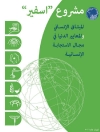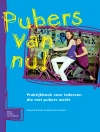This edited volume explores a range of causes for separation of children and young people from family, the impact of these causes, and methods that both professionals and families may employ to build or rebuild these relations. In particular, contributions focus on six high priority crises through which children and young people become either permanently or temporarily separated from their families: removal by child welfare services, migration, family breakdown, placement into institutional care, incarceration and/or the death of a parent. Authors emphasize the feelings of grief and loss experienced both by the child and their family whatever the separation context and the eventual impact on the young person ´s mental health. They conclude that reunification with the family is not always possible or desirable and permanent alternative sources of care and/or attachment may be required. But if reunification is possible, it is a complex and a multidimensional pathway as children move from one care context to the next. Innovation, coproduction with the birth family and tackling stigma and discrimination associated with family separations, is a high priority.
Table des matières
Chapter 1 Situational learning from an examination of reunification in varied contexts.- Chapter 2 Family relations and children’s/young people’s mental health: the impact of separation from the birth family.- Chapter 3 Multi-theoretical perspectives on family relations building and practices.- Chapter 4 Where is the love? Acknowledging birth family ties after removal.- Chapter 5: Ambivalent relationships. Adolescent’s experiences with Child welfare services in kinship foster care placements.- Chapter 6 Transition from residential to foster care, leading to the reunification of separated children with their birth families – the Albanian case.- Chapter 7 Complexity of co-production in the process of reunification in child protection services.- Chapter 8: Dialogue Processes: An Applicable Method for Reunification after Care Orders?.- Chapter 9 Social innovation and interprofessional collaboration in child–family reunification services: the Family group conference.- Chapter 10: Agreeing to disagree: perspective taking between siblings in separated families.- Chapter 11 The troubling family reunification in a post-separation abuse context.- Chapter 12: Supporting reunification through improved parental recognition: Reunification of Children with Disabilities Living in Institutional Care in Denmark and Tanzania.- Chapter 13 Parenting Between here and there: Children separated from families by migration and child welfare.- Chapter 14 Pain, obstacles and care: Unaccompanied minor and young refugees’ challenges related to family separation and reunification.- Chapter 15 Bridging Bonds: Nurturing Mother-Child Connections Through Incarceration and Beyond.- Chapter 16 Imagining the possible and the impossible in family reunification: An integrative framework to explore grief in the context of child removals.
A propos de l’auteur
Sarah Hean is Professor of Social Work at the University of Stavanger, Norway.
Vanessa Heaslip is Professor of Nursing and Healthcare Equity and lead Professor for Nursing and Midwifery at Salford University, UK.
Jonathan Parker is Professor of Society & Social Welfare at Bournemouth University, UK.
Pravin Tembjerg is Professor of Psychology at the University of Stavanger, Norway.












